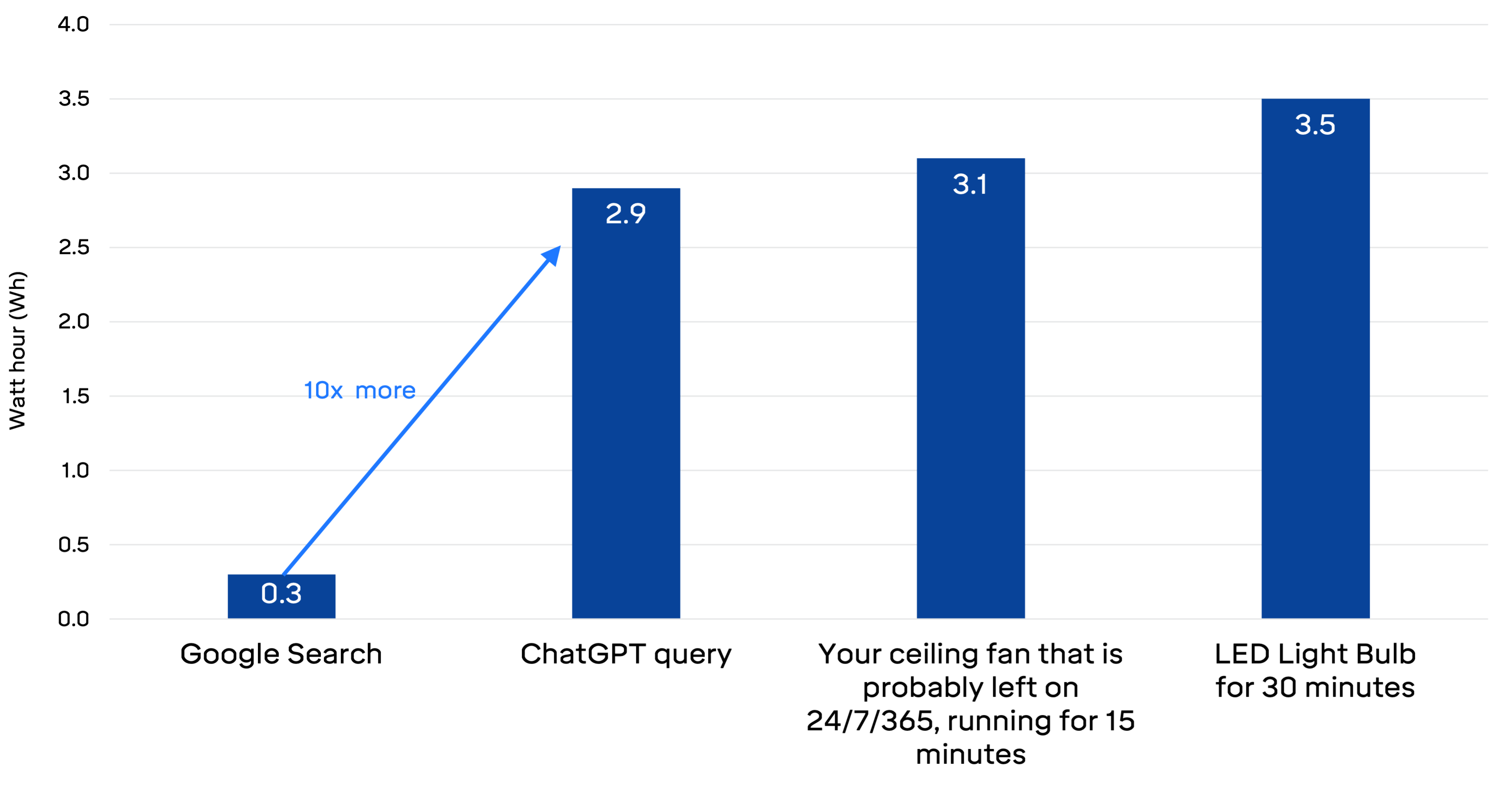Artificial Intelligence (AI) currently is the most popular and powerful investment trend. Investors are fervently buying Nvidia’s stock and other major tech companies that are directly involved in AI. These stocks are receiving significant attention, with average year-to-date returns of 40%, pushing the market to new heights. However, the AI ecosystem extends beyond just the tech sector. For example, the servers and equipment that operate AI programs are housed in data centers. These facilities need a constant electricity supply to operate the complex equipment and maintain optimal temperatures. So, how much electricity is required to power the AI revolution? A tremendous amount.
One fun stat that introduces us to the potential power needs deals with the adoption of ChatGPT. A ChatGPT query requires about 10X more electricity than a traditional Google search (2.9-watt hours vs. 0.3-watt hours). Next time you ask ChatGPT to help plan a vacation itinerary, know it’s using a similar amount of power to your ceiling fan running for 15 minutes (that, if you’re like me, you never turn off for the entire year)
Power consumption (Wh)

The energy demand for one query is still modest. However, AI use is emerging with image, audio, and video generation, which is more computation-intensive and requires much more power. Scaled up to the collective needs of consumers and businesses, the energy demands of AI-housed data centers become massive. In the U.S. alone, data centers are expected to consume 4.6% to 9.1% of total U.S. electricity generation annually by 2030 (vs. an estimated 4% today), a moderate rise from current levels enabled by energy efficiency and load management.
Projections of potential electricity consumption by U.S. data centers: 2023-2030

Note: % of 2030 electricity consumption projections assume that all other (non-data center) load increases at 1% annually.
For comparison, about 6% of electricity use goes towards cooling all the houses in the U.S. (A massive data center can consume the same amount of power as 80,000 to 800,000 homes or enough to send Marty McFly back to the future over 1,000 times…yes, I attempted the math.)
Do I smell an investment opportunity in power suppliers? You can certainly make the case. The U.S. doesn’t have excess electricity sitting around, hooked up, and ready to be plugged into a data center—far from it. Utilities, power generators, and industrial companies must build, connect, and supply this coming wave of electricity demand. Thus, tens of billions will be spent over several years to meet AI-related demand. Plus, the additional demand from increasing Electric Vehicle adoption further exacerbates the challenge.
But a word of caution: investing in themes is risky and prone to inopportune timing. And while the acceleration of AI seems fast among tech companies, it’s likely to be more measured and variable across the rest of its ecosystem. Building and powering data centers is a huge task. Power is a critical need for everyone, and diverting that resource toward data centers will face hurdles, backlash, and potentially added costs to others. This isn’t a slam-dunk investment trend, but it is worth watching.


